
Brief Encounters Along Morecambe Bay
[caption id="CrossingtheShiftingSands_Feature" align="aligncenter" width="1024"]
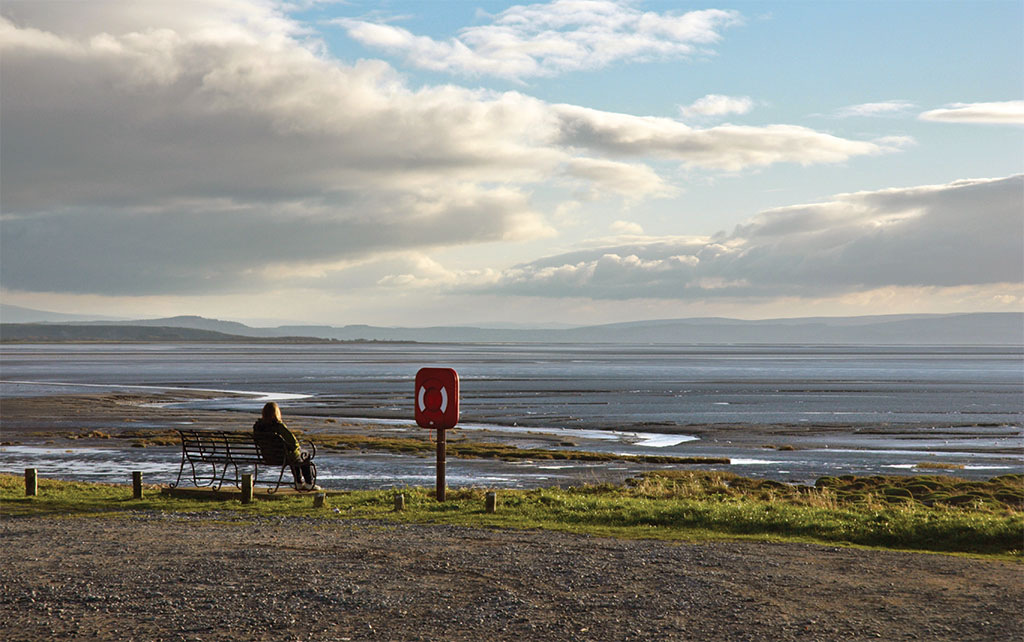
©BRAMWELLSLOCKER/ALAMY
Taking afternoon tea in the sun lounge at the Midland Hotel in Morecambe feels like taking a luxury cruise; not least due to the glamorous Art Deco surroundings—swank polished curves of marble and burr walnut from floor to ceiling. When it was first built, the Midland was visited by the stars of the 1930s and ’40s: Laurence Olivier, Coco Chanel and Noel Coward, and more recently it has served as a location for the BBC’s Poirot.
Principally, though, the feeling of being afloat comes from the Midland’s position right on the edge of Morecambe Bay—an area astride the boundaries of Cumbria and Lancashire at the southern end of the Lake District. Stretching from Morecambe to Barrow in Furness, the bay covers 120 square miles, with five estuaries and a constantly changing environment of moving channels, mudflats and sand marshes. With large areas of quicksand and tidal bores, this stretch of water and sand demands local knowledge—and respect.
[caption id="CrossingtheShiftingSands_img1" align="alignright" width="117"]
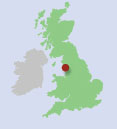
[caption id="CrossingtheShiftingSands_img2" align="aligncenter" width="1024"]
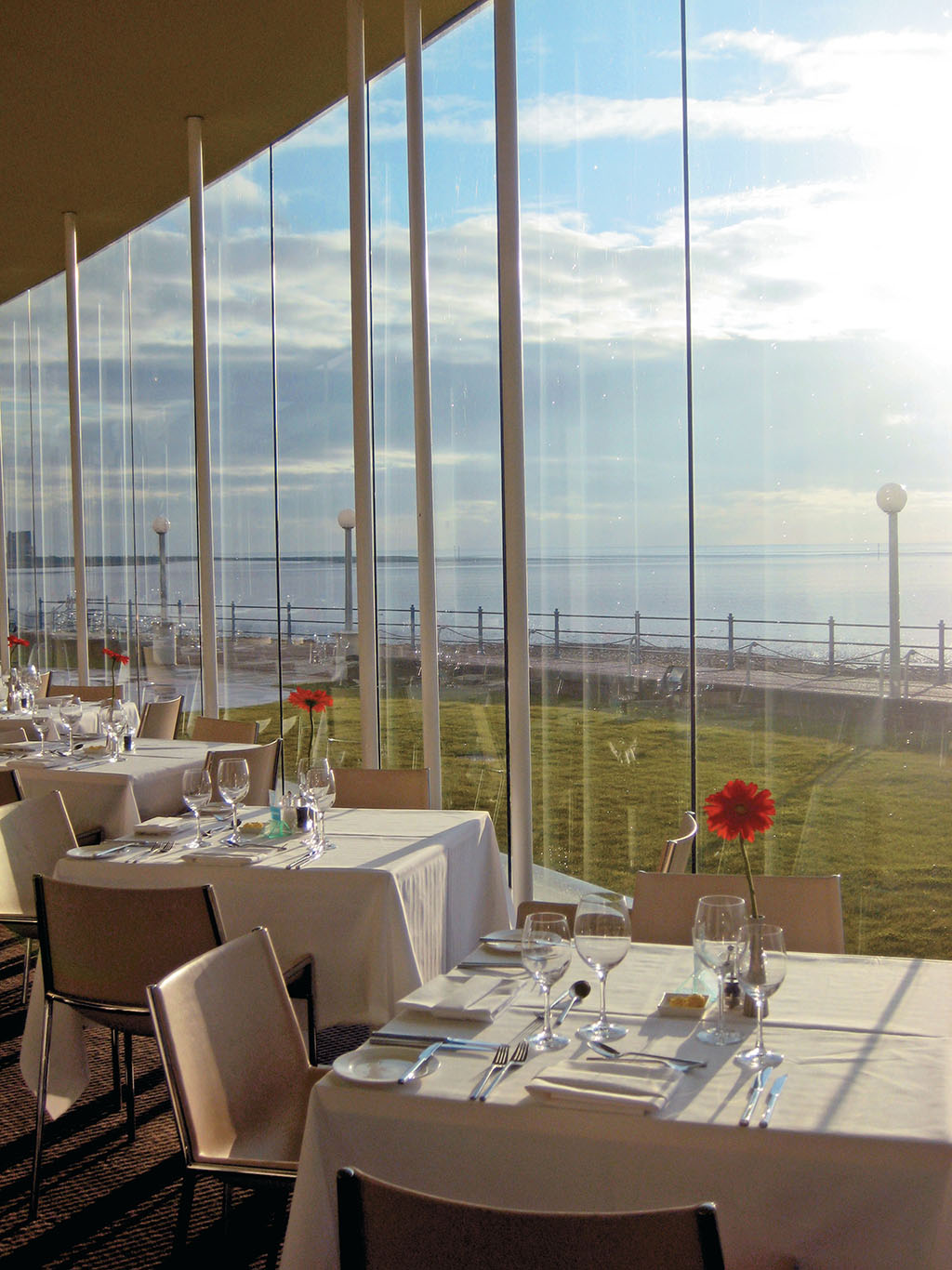
REBECCA GARDNER
From the safe and luxurious bubble of the Midland Hotel, you witness a show of changing skies and sea; a shaft of bright sunlight, a darkening cloud or, if you’re lucky, a rain shower pounding on the huge curved windows that hug the bay. Some rooms even provide binoculars so you don’t miss anything.
[caption id="CrossingtheShiftingSands_img3" align="aligncenter" width="1024"]
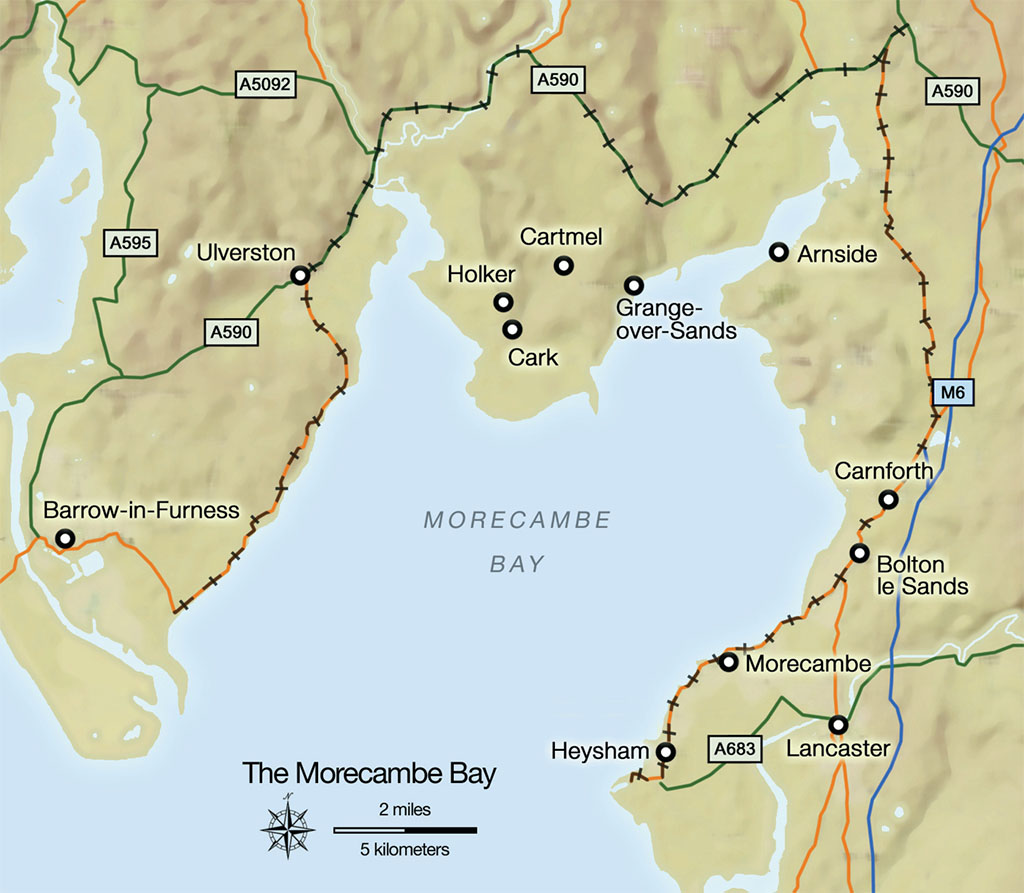
GREGORY PROCH
The Midland Hotel was part of Morecambe’s transformation into a fashionable resort in the 1930s. When the London, Midland and Scottish (LMS) railway company built its new Morecambe station on land right near the stone jetty on the beach, it inherited a small hotel on the site. The new, much larger hotel, the Midland, opened in 1933. It was designed by architect Oliver Hill and features work by renowned sculptor and stonemason, Eric Gill. Fans of Gill’s work still travel to the hotel just to see his craftsmanship, particularly the huge basrelief of the story of Odysseus in the hotel lounge, made from six tons of polished Portland Stone.
[caption id="CrossingtheShiftingSands_img4" align="aligncenter" width="409"]

ITV GLOBAL/THE KORBEL COLLECTION
Whether booking a room or just afternoon tea, also be sure to book a hotel tour with staff member Brian Jenkins, author of a recent guide to the hotel’s history. Like all the staff at the Midland, Jenkins offers a warm welcome with a twist of Northern humor—“We do have the lift, but it is quicker to slide down the banister.” With such a grand circular staircase, it is very tempting.
To really get a sense of Morecambe Bay, take a rail journey that starts just a few miles north of Morecambe at Carnforth. From here, the Furness line takes passengers on a 40-minute journey to Barrow in Furness with spectacular views across the bay, stopping at several villages. Allow time for the visitor center at Carnforth Station, which was the location for the 1945 classic movie Brief Encounter. The movie was shot principally at night, so trains delivering troops and goods for the war effort could still continue. In a framed letter in the current tearoom, which is identical to the one in the movie, leading lady Celia Johnson describes the guards and porters at Carnforth as “awfully nice.” This is still true today, whether you are ordering tea, watching a rerun of the movie or visiting the center’s museum.
The railway is amazing, not just because of its views, but because it actually exists at all. In this vast area of treacherous shifting sands, establishing the 1,566-foot-long viaduct and 50 support piers took a huge amount of Victorian ingenuity, including that of engineer George Stephenson, known as the “father of the railways.” The alternative journey by road was considerably longer, negotiating the inlets and estuaries. The initial motivation of the Victorians was to safely and quickly transport the rich deposits of minerals and slate from the Barrow area. Today, locals and visitors watch the patchwork of water and grassy sandbanks on either side, with the narrow bridges giving the illusion of being on board a boat rather than a train. In this varied habitat, you might also see wild geese gathering on the sands or glimpse deer grazing in the fields.
Great Digs & Dining
Look out for local specialities such as Morecambe Bay potted shrimps, cheeses such as Garstang Blue and Appledore and sticky toffee pudding.
Midland Hotel, Morecambe Bay. Afternoon tea and hotel bookings
www.englishlakes.co.uk
History of the hotel and its artwork from Friends of the Midland at
www.midlandhotel.org
Netherwood Hotel, Grange-over-Sands.
www.netherwood-hotel.co.uk
Cavendish Arms at Cartmel. Pub, restaurant and hotel accommodation in a 17th-century coaching inn.
www.thecavendisharms.co.uk
Cartmel Village Shop and Café.
www.cartmelvillageshop.co.uk
Aynsome Manor Hotel, Vale of Cartmel. Hotel dating back to the 16th century with views of Cartmel Priory.
www.aynsomehotel.co.uk
Gillam’s Tearoom, Ulverston.
www.gillams-tearoom.co.uk
[caption id="CrossingtheShiftingSands_img5" align="aligncenter" width="1024"]
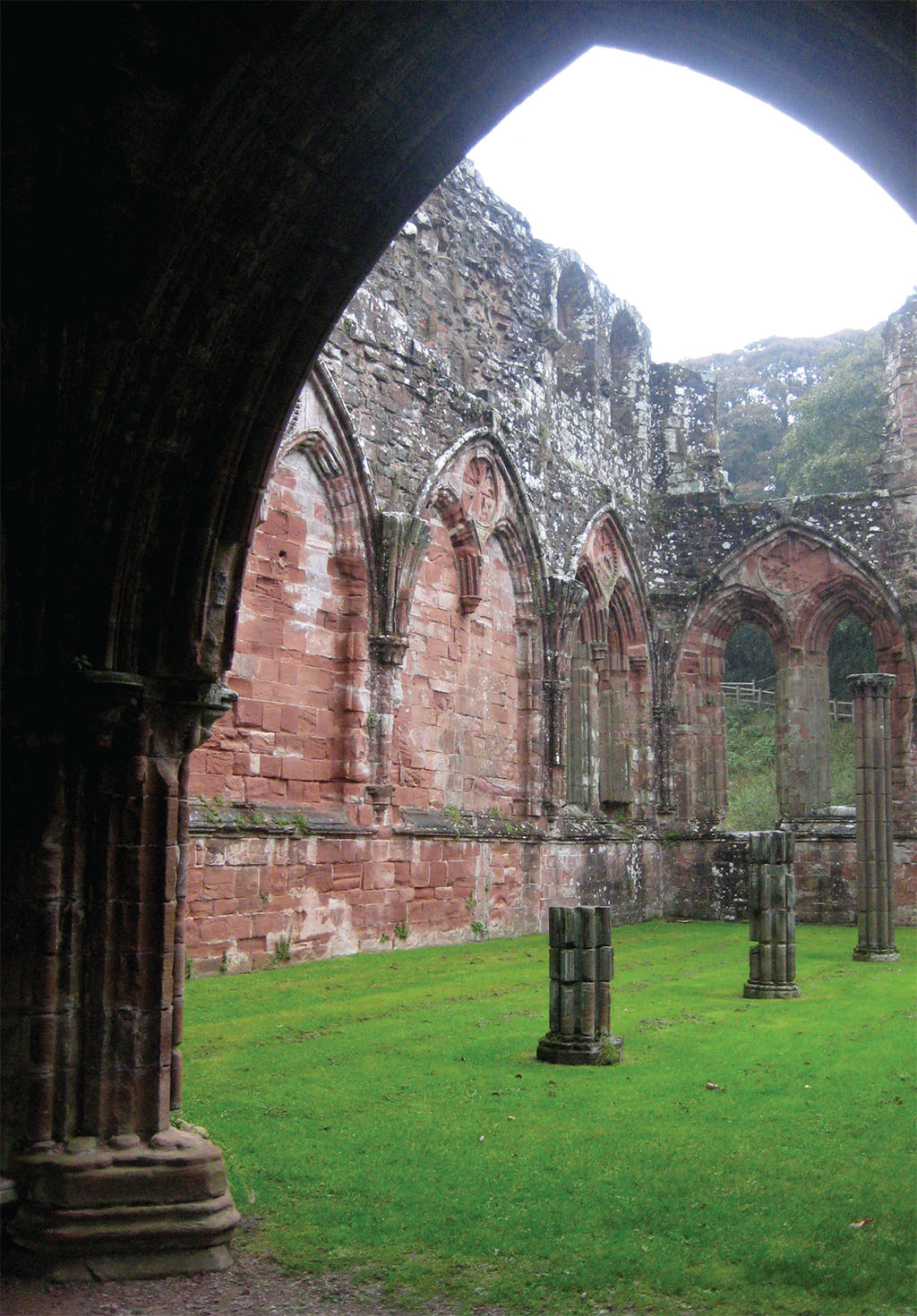
REBECCA GARDNER
Getting There
I drove to Morecambe with the M5 motorway running north to south past a lot of the entry points to the area such as Lancaster, Carnforth or Kendal. Train travellers are best heading for Lancaster and catching connections from there. The area is such that it might be combined with a Lake District tour, heading south from Windermere or planned as a stop-off on the way to Scotland possibly or across from York.
Centuries before the railway arrived, crossing the bay, important for both traders and travelers, was a very hazardous activity. In the Furness Abbey museum, a quote from the abbot in 1325 comments on “the great mortality of the people of Furness… passing and returning across the sands…who are often caught and drowned at the number of 16 a time.” At the far western tip of the peninsula, the Furness area was particularly isolated. That meant there were few challenges to the Abbey’s power and wealth, and it became one of the richest Cistercian abbeys in England. Set in a wooded valley, with a river running through the center of the site, the abbey and its museum make a peaceful place to visit. The abbey, now partially in ruins, was built from a striking combination of the soft red sandstone and grey limestone.
Elsewhere, other religious communities were trying to help the people negotiate the quicksand and swiftly flowing rivers between villages. At Cartmel Priory, for instance, 20 miles by road from Furness, the canons of Cartmel made themselves responsible to provide the service of a guide across the Kent Sands. Despite these efforts, lives continued to be lost.
In the 16th century, the King appointed a Royal Guide to help people cross the bay. More than 400 years and 24 Royal Guides later, the present incumbent of the post is Cedric Robinson—who has held the position for more than 50 years. For this he receives £20 a year and a 700-year-old cottage overlooking the bay. He now leads groups of people across the bay who undertake the eight-mile walk solely for the enjoyment and challenge. Cedric walks out beforehand testing the sands and marking the way with laurel branches. “Sandwalkers” walk barefoot; a shoe stuck in the sand might pull a walker down with it. Chris Blackwell, a volunteer at Cartmel Priory, recounts his experience: “Everyone stands shoulder to shoulder and walks together following the tops of the laurel leaves—it feels like the crossing of the Red Sea.”
Traveling around the bay more conventionally, by train or car, you’ll find each local town has its own character. Ulverston is a bustling market town of cobbled streets filled with independent shops and cafes. Lunch at Gillam’s, run by the same family since 1892 and voted by the Times as one of the UK’s top 10 tearooms, is highly recommended—try some of the area’s excellent cheeses here. Look out also for visitors having their photograph taken next to the charming bronze statue of Ulverston’s famous son and his comedy buddy. Stan Laurel was born in the village and the Laurel and Hardy Museum in Ulverston is a great visit, featuring photos, memorabilia and fascinating letters from Stan to his fans. Join in the laughter in the tiny 16-seat theater that plays their films continually.
Cartmel is a smaller village just a mile from Cark and Cartmel station. Cartmel Priory dominates the village. The beautiful 12th-century monastary remained intact during the dissolution of the monasteries. The Cartmel Village Shop and Café is a famous destination for devotees of sticky toffee pudding, although other nearby towns also assert their claim to having invented this rich, classic British dessert.
Nearby, Holker Hall and Gardens are well worth a visit, again just a mile from the Cark and Cartmel station. In fact, one of its previous owners, the 17th Duke of Devonshire, had the train station built specifically for his guests. Due to a major refurbishment after a fire in 1871, the hall has a surprisingly light feel for a Victorian home with interesting detail such as the Wedgwood fireplace.
[caption id="CrossingtheShiftingSands_img6" align="alignright" width="286"]

Not to Miss
- Carnforth Station Visitor Centre www.carnforthstation.co.uk
- Furness Abbey, Barrow in Furness www.english-heritage.org.uk
- Laurel and Hardy Museum, Ulverston www.laurel-and-hardy.co.uk
- Holker Hall and Gardens, Cark-in Cartmel www.holker.co.uk
Another popular town on the rail line, Grange-over-Sands, is known for its landscaped gardens overlooking the bay. A few hundred yards from these views and the station stands Netherwood Hall, another hotel chock-full of character. In complete contrast to the Midland Hotel, the public rooms are decorated with lavish Victorian indulgence, with heavy oak panelling and inviting red leather chesterfield sofas facing a roaring fire. Look out across the bay while sampling the local kippers for breakfast, or take in the view from the ornate terrace with its unusual topiary and gardens. The panorama is just as inviting at night as the lights from the town of Arnside twinkle across the bay.
During the day, Arnside is the starting point of the bay crossing for the Royal Guide and his sandwalkers. It may still bemuse many visitors as to why people would want to do such a thing, with participants often sinking up to their knees to get across. Monks and traders of previous centuries would have certainly welcomed the safety and comfort of taking the train instead. It seems that crossing the sands will always be part of life in Morecambe Bay.
[caption id="CrossingtheShiftingSands_img7" align="aligncenter" width="1024"]
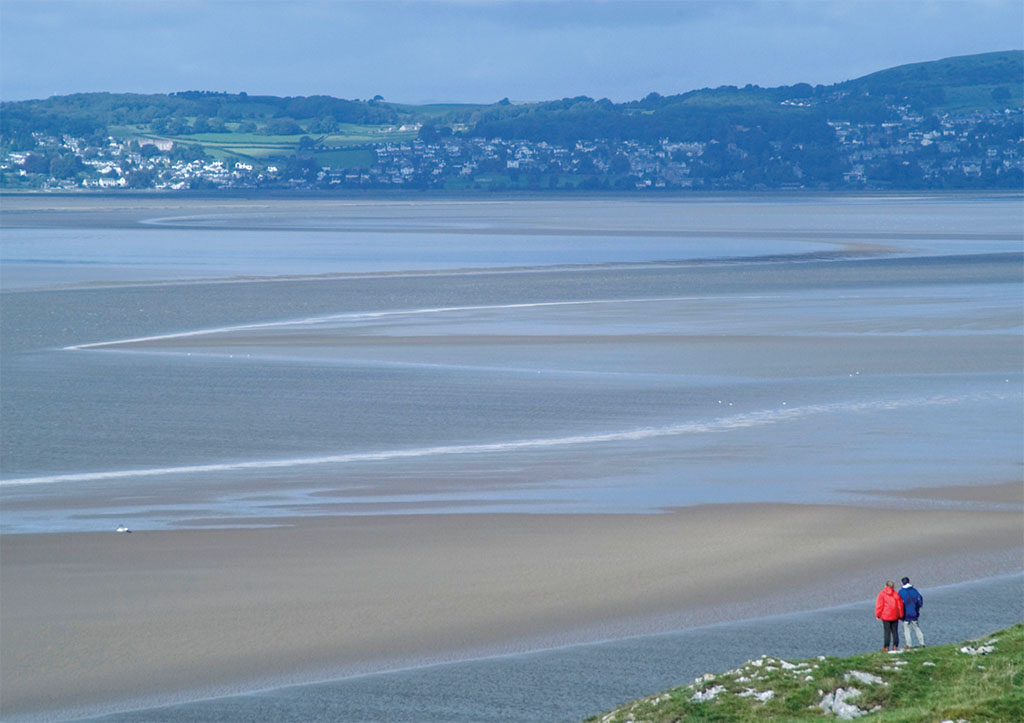
©TONY WRIGHT/EARTHSCAPES/ALAMY





Comments